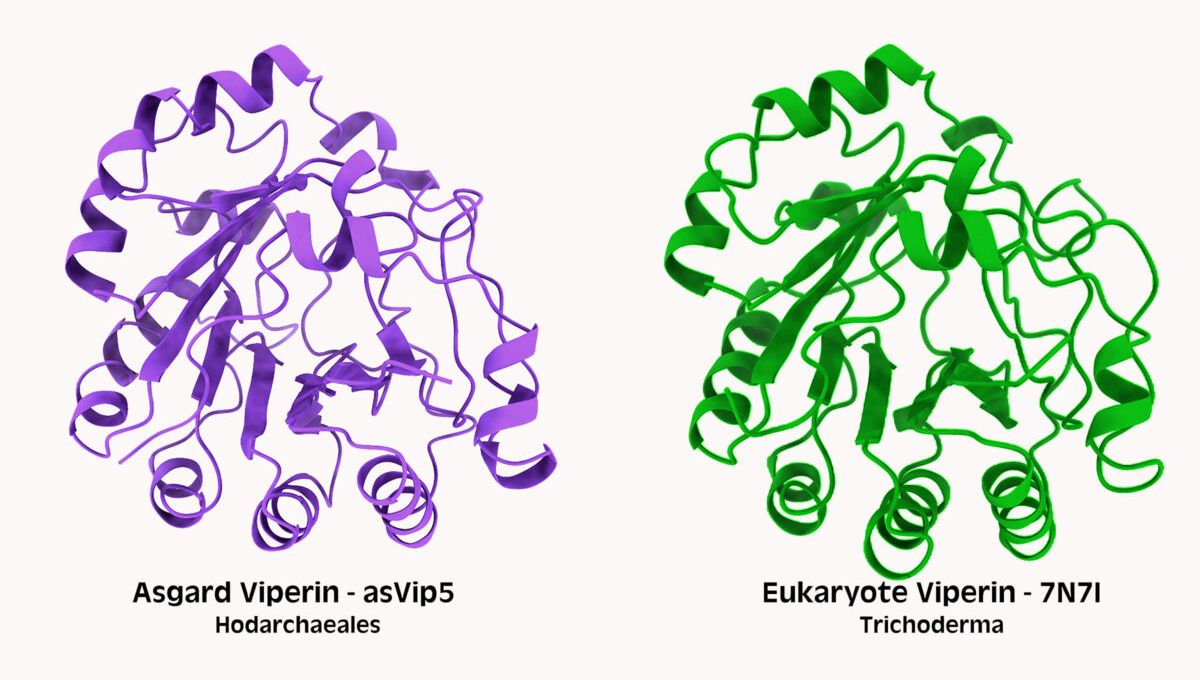
Defense systems found in all complex life (eukaryotes), including us, were likely passed down from “microbial ancestors” known as Asgard archaea billions of years ago. According to recent research, these single-celled organisms are the source of two key elements of our innate immune system: viperins and argonautes.
Asgard archaea – also called Asgardarchaeota – is a group of archaea that contain eukaryotic signature proteins.
The team behind the latest study identified 2,610 complete defense systems in Asgardarchaeota. The Asgard defense systems comprise 89 unique systems, including viperins and argonautes. These two proteins play important roles in the immune systems of all complex life. While versions of them exist in bacteria, those present in eukaryotes are more closely related to Asgard archaea, the researchers conclude.
“Our results support that Asgardarchaeota played important roles in the origin of antiviral defense systems in eukaryotes,” the team write in their paper.
In other words, “it adds more support to the fact that the Asgards are our microbial ancestors,” Brett Baker, associate professor of integrative biology and marine science and senior author, said in a statement. “It says that not only did eukaryotes get all these rich structural proteins that we’ve seen before in Asgards, now it’s saying that even some of the defense systems in eukaryotes came from Asgards.”
Viperins detect foreign DNA and can edit it in a way that stops cells from being able to make copies. Argonautes, meanwhile, chop up DNA – both strategies serve to stop a virus from spreading. In more complex lifeforms, argonautes can also block the virus from making proteins via RNA silencing.
“Viral infections are one of the evolutionary pressures that we have had since life began, and it is critical to always have some sort of defense,” explained Pedro Leão, now an assistant professor at Radboud University in the Netherlands and a recent postdoctoral researcher in Baker’s lab. It makes sense then that such mechanisms would be conserved: “When bacteria and archaea discovered tools that worked, they were passed down and are still part of our first line of defense,” Leão added.
Initially, the team studied the tree of life to identify closely related proteins that are involved in immunity. Then, using an AI tool called ColabFold, they were able to predict whether those with similar sequences of amino acids – the building blocks of proteins – also had a similar structure, which in turn suggests similar function.
“Asgard viperin and argonaute proteins have structural homology to eukaryotic proteins,” meaning they look very similar across the tree of life, the researchers write. “Phylogenetic analyses suggest that eukaryotic viperin proteins were derived from Asgard viperins.”
Likewise “eukaryotic and bacterial argonaute proteins appear to have originated in Asgardarchaeota.”
To demonstrate the impact that Asgard proteins can have on immunity, the study authors took viperins from archaea and cloned them into bacteria. When faced with viruses, the viperins displayed anti-phage activity, meaning they provided some immune protection to the bacteria.
These findings bolster the idea that we have Asgard archaea to thank for these elements of our innate immune system.
“It’s undeniable at this point that Asgard archaea contributed a lot to the complexity that we see in eukaryotes today,” Leão said. “So why wouldn’t they also be involved in the origin of the immune system? We have strong evidence now that this is true.”
The study is published in the journal Nature Communications.
Source Link: Asgard Archaea: Are These Single-Celled Organisms Our Microbial Ancestors?